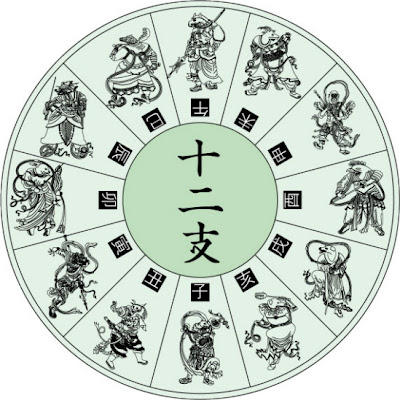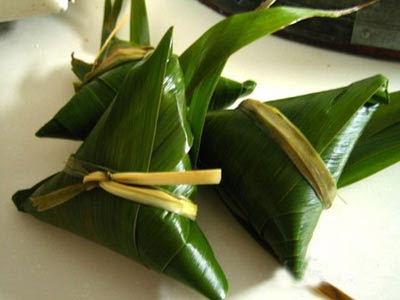 |
| The Lunar Calendar |
The very first renderings of a lunar calendar go all the way back to the Shang Dynasty. This is the 2nd Chinese Dynasty, which existed in 1600 BC until 1046 BC. But the calendar has gone through a number of revisions since that time. As science progressed and the true and actual cycles of the moon and the earth were understood the calendar was changed t reflect this information. These revisions are tedious and boring, so I will not include all of that stuff in this post but I will tell you that the current lunar calendar has been in use since 104 BC.
There are a number of rules that govern the calendar:
1. Each Month begins at midnight on the day of the new Moon.
2. There are 12 regular months.
3. The sun must pass through winter solstice in month 11
In order to make that happen there must be an intercalary month inserted into the calendar. An intercalary month is like a leap month The intercalary month can take place after any month and is the same number of days as the month it follows. Because of the use of intercalary months of the Lunar calendar the corresponding days of the holidays in the Solar Calendar Change each year. For example in 2011, Chinese new Year took place on February 3, in 2012 it will be on January 23.
Most of Taiwan’s traditional holidays are marked through the use of the Lunar Calendar. modern Holidays are marked through the Solar Calendar. Let’s take a look at the Taiwanese Holidays:
| Shin Kong Mitsukoshi decorated for the Year of the Rabbit |
The Lantern Festival: 元宵節 Lunar date is January 15. (February 6, 2012) This is the first day a full moon can be seen in the New Year. People celebrate by lighting and launching sky lanterns. There are also huge venues where people go to see artistically made lanterns and watch them launched. People often write prayers and wishes on the side of the lanterns before they are released. The traditional food for the Lantern festival is the tangyuan 湯圓 (soup circle) These are balls of gooey, sweet rice gluten.
| A Replica of an actual Lantern at the 2011 lantern Festival |
Dragon Boat Festival: 端午節 Lunar date is May 5. (June 23, 2012) his festival honors Chinese Poet Qu Yuan. It is celebrated with the racing of the dragon boats. People eat a special sticky rice pyramid called a zongzi.
Night of Sevens: 七夕 Lunar date is July 7. (August 23, 2012) This holiday celebrates the legendary love of Niulang and Zhinu. According to legend they are forever separated, but are allowed to unite on July 7. The Taiwanese view this as a romantic night celebrated much like Valentine’s Day in the west.
 |
| Zongzi, the traditional food of the Dragon Boat Festival. |
Mid-Autumn Moon Festival: 中秋節 Lunar date is August 15. (September 12, 2011/ September 30, 2012) This is the day when most people get together with friends and family and barbeque. Look for an in-depth post on the Moon Festival in September. A gift is given to friends and family of moon cakes. Circular cakes made with egg yolks and other things inside. The shape represents the moon and the cakes themselves are good wishes for the recipient.
Double Ninth Festival: 重陽節 Lunar Date is September 9. (Oct. 5, 2011/Oct.23, 2012) People usually celebrate this holiday by climbing mountains or visiting flower shows.
 |
| Traditional Moon Cakes for the Mid-Autumn Moon Festival. |
Winter Solstice: 冬至 Solar Holiday (Dec. 22, 2011/Dec. 21, 2012) This corresponds to the Winter Solstice in western Countries. Families gather to celebrate on this day.
Kitchen God Festival: 謝灶 Lunar date is December 23. (Jan. 27, 2011/ Jan 17, 2012) This is the day to thank the kitchen god. It is believed that on the twenty third day of the twelfth lunar month, just before Chinese New Year he returns to Heaven to report the activities of every household over the past year to the Jade Emperor (Yu Huang). The Jade Emperor, emperor of the heavens, either rewards or punishes a family based on Zao Jun's yearly report.
One final note is that the Chinese Zodiac is broken down into 12 years. Each year corresponds to a particular animal. It is believed that people born in a particular year will share the traits of the animal mentioned. The following is a breakdown of the Zodiac and the corresponding years from 1924 through 2031.
Rat 1924 1936 1948 1960 1972 1984 1996 2008 2020
Ox 1925 1937 1949 1961 1973 1985 1997 2009 2021
Tiger 1926 1938 1950 1962 1974 1986 1998 2010 2022
Rabbit 1927 1939 1951 1963 1975 1987 1999 2011 2023
Dragon 1928 1940 1952 1964 1976 1988 2000 2012 2024
Snake 1929 1941 1953 1965 1977 1989 2001 2013 2025
Horse 1930 1942 1954 1966 1978 1990 2002 2014 2026
Sheep 1931 1943 1955 1967 1979 1991 2003 2015 2027
Monkey 1932 1944 1956 1968 1980 1992 2004 2016 2028
Rooster 1933 1945 1957 1969 1981 1993 2005 2017 2029
Dog 1934 1946 1958 1970 1982 1994 2006 2018 2030
Boar 1935 1947 1959 1971 1983 1995 2007 2019 2031
Photo Credits:
Lunar Calendar: http://henrikchoi.blogspot.com/2010/07/year-of-earth-ox.html
Moon Cakes: http://lsj.zhuxi.gov.cn/E_ReadNews.asp?NewsID=634
All other photos: Brenda and Elizabeth Banducci








